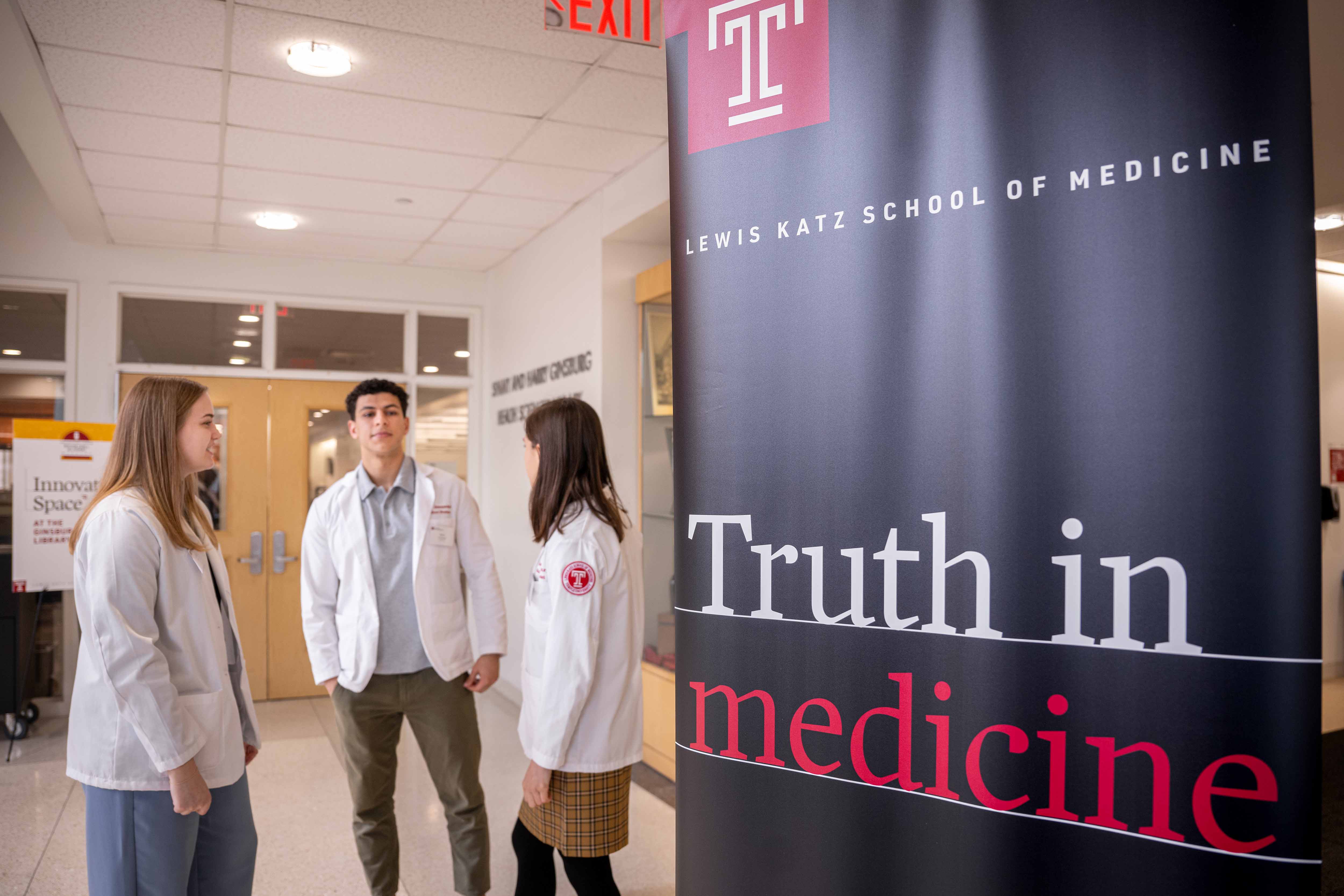In fiscal year 2025, the Lewis Katz School of Medicine (Katz) raised nearly $17 million in philanthropic support, with donor generosity advancing key priorities across the institution: scholarship access, innovation in education, real-world research, and long-term investment in communities.
“The trajectory of our medical school is big, bold and ambitious, and reflects the best of who we are and what we aspire to be. Philanthropic support is essential to fueling our impact, and continued momentum,” said Amy J. Goldberg, MD, FACS, the Marjorie Joy Katz Dean. “Across the board, Katz donors are true partners in our work. Whether it’s supporting education, funding critical research or serving our communities, donor commitment and generosity advances every area of our mission.”
Reducing Barriers Through Scholarship
Scholarship support remains top philanthropic priority, and directly helps Katz shape the next generation of Temple Made physicians. This year, 10 new endowed scholarships were created, and combined donor contributions helped the school meet its goal to lower the financial burden facing our students. For the Class of 2025, the median student debt was brought beneath $170,000, and no student graduated with more than $300,000 in loans. Though there is work to do, momentum is building.
Najya Williams, MD ’25, spoke to donors at this year’s Celebration of Scholarship Dinner, noting that the ripple effects of their generosity reached her family, and will reach the patients she cares for throughout her career.
“You may have imagined that your gift would only impact one person,” she said. “But let my standing here demonstrate that you are changing the lives of many.”
Among the new endowed funds this year is the Mest/Pelekakis Scholarship, established by Douglas Mest, BS ’85, MD ’88 and his husband Mark Pelekakis to support the next generation of physicians as the path to medical education becomes more financially challenging and socially complex than ever.
“Temple gave me the knowledge and flexibility to grow into new parts of medicine that didn’t even exist when I graduated,” Mest said. “It prepared me to think broadly, and to lead with purpose.”
Advancing How Students Learn
Donors also played a key role in helping Katz evolve how medicine is taught. Fifty-six students received Measey Away Rotation Grants this year. Established by the Benjamin and Mary Siddons Measey Foundation, the new grants will provide annual support to students for away rotations, allowing them to train at health systems around the country, explore competitive specialties, and gain exposure to a variety of patient populations.
Anatomy education at Katz was enhanced through continued support from S. Jay Hirsh, MD ’70, who funded the addition of an Anatomage Table to the Schneck Gross Anatomy Lab, after establishing the S. Jay Hirsh, MD Endowed Anatomy Lab Fund in 2020. The digital dissection tool provides life-size, 3D views of human anatomy, and is being integrated directly into pre-clinical coursework.
Supporting Research with Real-World Impact
Philanthropy also helped power Katz’s research enterprise, including support for faculty-led projects addressing urgent healthcare challenges. This year, Katz received nearly $1 million in funding from the Patient-Centered Outcomes Research Institute (PCORI) for a study focused on antibiotics prescription for children with respiratory infections.
Co-led by Janet Lee, MD, Associate Professor of Pediatrics at Katz, and Claire Raab, MD, President and CEO of Temple Faculty Physicians, the new initiative will leverage findings on the risk of side effects in broad- vs. narrow-spectrum antibiotics to improve antibiotic prescribing and stewardship.
Donors also helped launch the school’s inaugural Physician-Scientist Grants, designed to support early-career faculty whose research is informed by clinical insight. Projects funded this year include a program to develop patient-specific aortic endografts at the point of care, an AI-powered lung cancer risk model for under-screened populations, and a study investigating how branched-chain amino acid metabolism impacts liver-muscle signaling and metabolic disease.
One of the inaugural grants was made possible by longtime supporter and Board of Visitors member E. Ronald Salvitti, MD ’63. The other two were funded through the Dean’s Fund, which advances high-impact research and institutional priorities.
Investing in Community and Opportunity
Donors also supported Katz’s expanding presence in the community, including establishing the Lang Medical Scholars pipeline program. The program introduces middle school students from underrepresented backgrounds to careers in healthcare, and supports them across key educational milestones through to matriculation. The initiative aligns with Katz’s broader strategy around workforce development increasing inclusivity in healthcare. By investing in early exposure and sustained mentorship, the program helps address gaps in access and representation in the medical profession.
Looking Ahead
“Our donors are creating real change for our students, our faculty, and the communities our graduates will go on to serve,” said Georgeann Moore, Assistant Dean, Development & Alumni Relations. “Every gift makes a meaningful difference, and we are deeply grateful for these investments in Temple Made medicine.”
As Katz continues implementing its Inspiring Excellence strategic plan, the partnership between donors and the institution remains essential. FY25 was a year of measurable progress, and a clear reminder that philanthropic support is not only shaping the future of the school, but the future of medicine itself.

